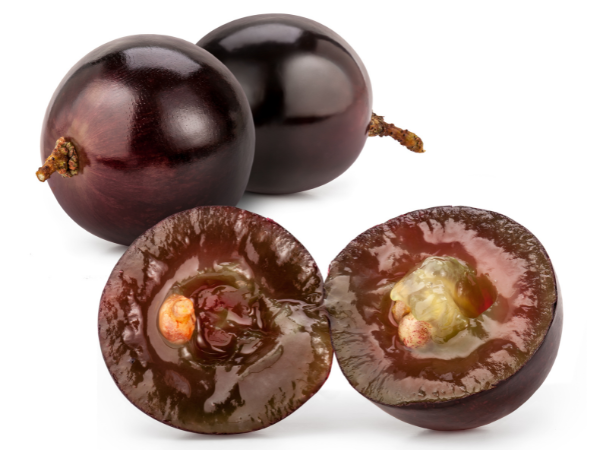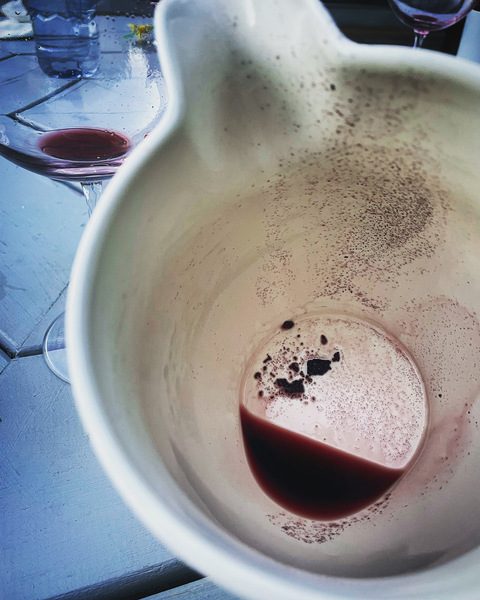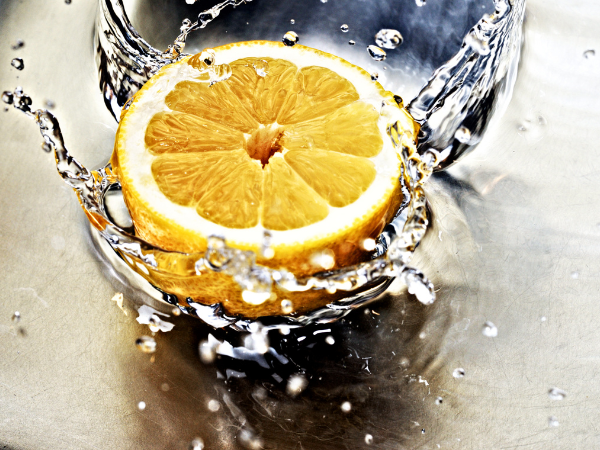What's the Difference Between Tannins and Acid?

Acid for whites; tannin for reds. Mostly.
By Erin Henderson
I teach a class called Wine for Beginners. It’s an incredibly fun program, and I find I learn just as much as the wine enthusiasts taking it. They’re just starting out, of course, and their questions constantly require me to hone in and get specific with the curriculum. As Albert Einstein once said, “if you can’t explain a complex idea simply, you don’t understand it well enough.”
At the start of the course, I always warn students not to get discouraged; wine tasting takes practice – years of it – and is incredibly challenging. And, just when you think you might possibly understand something – a region, a flavour, a grape, a technique – well, things often change. That’s both the beauty and frustration of wine appreciation.
One of the concepts that I find confounds new wine students is the difference between acid and tannins. These two elements are part of a wine’s structure, and, along with sugar and alcohol, give the wine its bones.
But even though these two components are completely opposite – tannins are drying, acid is hydrating – wine lovers get confused, and then they get exasperated. And then they go to the beer tent where things seem easier. And that’s not good for anyone – least of all my future employment, so let’s try to clear things up.

Tannins
Put simply, tannins are the gritty things found in red wine that makes your mouth pucker or dry out and feel like it’s full of cotton balls.
Where Do Tannins Come From?
Tannins are bitter compounds found in the skins of grapes. They also exist in black tea, dark chocolate, and walnut skins.
You can find tannins in grape stems and seeds, though those are often removed from the wine making process, as well as oak barrels which can sometimes, but not often, contribute to the tannic feel of a wine.
Do All Wines Contain Tannin?
Generally, just red wines have tannin because of the wine making process.
Red wines get their colour from the skins (the pulp is clear 99% of the time), so when red wine grapes are crushed, the clear juice turns red by soaking with those coloured skins for a number of days (just how long is up to the winemaker). However, it’s not only the colour that’s extracted from the skins, but also the tannins, which infuse into the juice as well (as do heart-healthy polyphenols and flavonoids, which is why it’s said red wine is healthier than white, which does not have skin contact.)

However, tannins range in intensity from quite soft to very strong. Thin-skinned grapes like Pinot Noir often have nearly imperceptible tannins, while thick-skinned grapes like Shiraz can be quite fierce.
Sometimes you will find traces of tannin in white wines, if the white has had a bit of skin-contact in the wine making process. Orange wines, which are just skin-contact whites, usually have noticeable tannin.
What Do Tannins Taste Like?
Tannins are bitter and astringent.
Take a red grape from your fridge and peel it. Eat only the skin – you will likely taste a bitter note and feel your mouth start to dry out.
On their own, tannins are sort of yucky, but when eaten alongside the sweet flesh of the grape, the juicy pulp balances the harsh skin and vice-versa.
The same thing happens in wine: the bitter notes of the tannin play alongside and compliment the fruit, spice, and earthy flavours in the wine.
What Do Tannins Do for Wine?
Tannins loan structure, texture, and balance to reds, allowing them to age gracefully. They also help equalize fats and protein in food pairings (this is why steak and Cabernet Sauvignon is such a popular pairing.)
Related: How Long Will Your Wine Last?
Acid
Acidity is found in all wines – red, white, pink, orange, sparkling, and sweet. It’s a necessary, and naturally occurring part of a grape which gives wine freshness, lift, and energy. Without it, you’re just drinking nectar.
Where Does Acidity Come From?
Acidity already exists in the grapes. Certain grapes have more, others have less, but they all have it. Wine grapes like Riesling or Sauvignon Blanc have lots, which is why your mouth waters when you drink them. Wine grape like Viognier or Gewurztraminer have less, so you mouth doesn’t salivate as much.
Winemakers can help promote the perception of acidity in many different ways, including picking early in the ripening phase. Think about a peach at the start of the season and how tart it tastes. That same peach towards the end of the harvest will be soft, juicy, and sweet.
How Does Acidity Taste?
Acid is more of a sensation than a flavour. Think about sucking on a lemon. Your mouth is watering right now just thinking about it, right?
Acidity, while there are different forms, like the softer lactic acid found in milk to the bright tartaric acid found in green apples, helps you salivate and is perceived as tart or sour in high levels.
What Does Acid Do for a Wine?
High acid wines feel fresh, angular, and lively, whereas low acid wines feel smooth, soft, and round. Think of a green apple versus a yellow one.
Acidity is also terrific for food pairing. It cuts through fats giving your food verve and keeping your palate fresh.
Related: Food and Wine Pairing Basics

TLDR: Tannin vs Acid – How to Know the Difference
Tannin dries out your mouth, acidity makes it water.
This can make wine drinkers take pause because drying and watering is happening at the same time – it’s quite the mind bend. Especially with red wines where both acidity and tannin co-exist.
The more you critically taste a wine – slow down and consider what’s happening to your mouth – you can begin to dissect the separate elements of the whole.
The good news is you have to practice by drinking more. It’s not a bad assignment.
Related: How to Host a Wine Tasting


